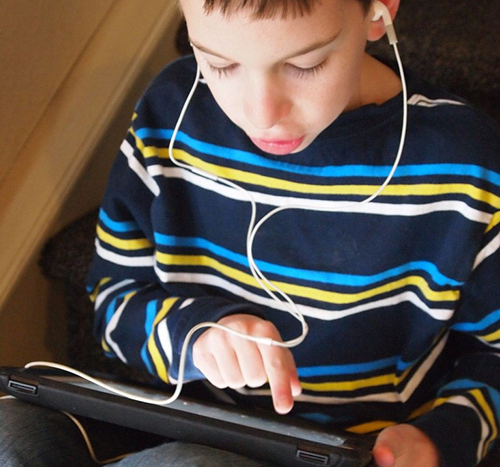Chapter 6: Supporting Diverse Learners
6.1 Getting to Know My Students

I love the first day of school and getting to know my students as readers and writers. It is the beginning of a new journey where we learn about each other’s’ likes and dislikes. We also learn each other’s’ passions and all the different expertise that will be revealed in our room. Last year I wanted to seamlessly weave digital literacy into my workshops but I wasn’t quite sure where or how to begin. I always sit down before the first day to look over data to help me determine my students needs as learners. I pulled out the students’ Spring running records to see what they had control over as readers. A running record helps me understand how students decode unknown words and some strategies they use to comprehend the story. I wrote down some possible teaching points but I needed to know more. I started to wonder what kind of reading and writing habits the students had under control. Can they write ideas down quickly or fluently on paper? Which authors or genres do they love? Do they enjoy reading and make time to read outside of school? Do they share books or recommend books to other readers? Do the students like to write? What types of genres do they understand as writers?
I reread over my teaching points and questions and realized that I was still thinking about the literacy framework the same way I always did. I thought of possible mini-lessons, teaching points in conferences, and possible guided reading groups. I knew that implementing a reading and writing workshop was best practice for teaching literacy and I needed to stay true to the workshop model. However, I needed to push myself to think about how to integrate digital tools within the workshops to support the various type of learners I had and to prepare students for future jobs not even imagined yet. I needed to focus on how the digital tools would enhance the learning in our workshops. I needed to focus on my purpose for integrating the digital tools in a mini-lesson or how digital tools would help students communicate, collaborate, and reflect on their learning. I needed to think about how technology would be a tool to help students by providing them with more voice and choice.
I learned that ten of my third grade students were English Language Learners and I was excited about that because of what they could bring to our classroom. The students who were learning English as a second language also had diverse backgrounds which we could build upon to grow an appreciation for different cultures as a learning community. Some of the students were fluent in their native language and in English. Others were more fluent in English than their native language spoken at home. A few of the students were more fluent in their native language than in English. I was looking forward to getting to know all my students who are unique in their own ways. I loved the idea of having so many different perspectives based on different experiences to enrich our conversations which would deepen our understandings throughout the year.
I thought about these students who were speakers of English as an additional language as readers and writers in my workshops. I focused on their strengths in reading and writing English and how to build on those strengths. I knew that using technology as a tool could propel their learning just like my non English Language Learners. It was time to begin thinking about the possibilities digital workshops would offer for all my students to be successful learners.